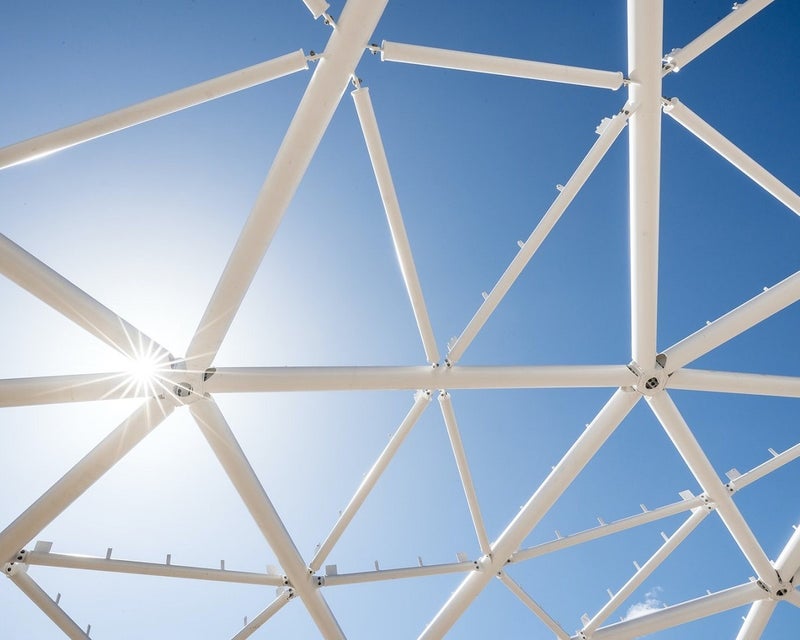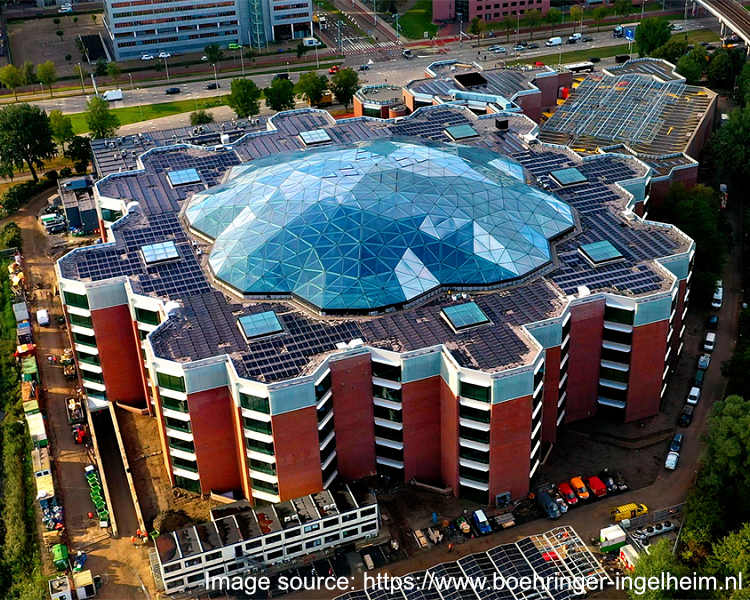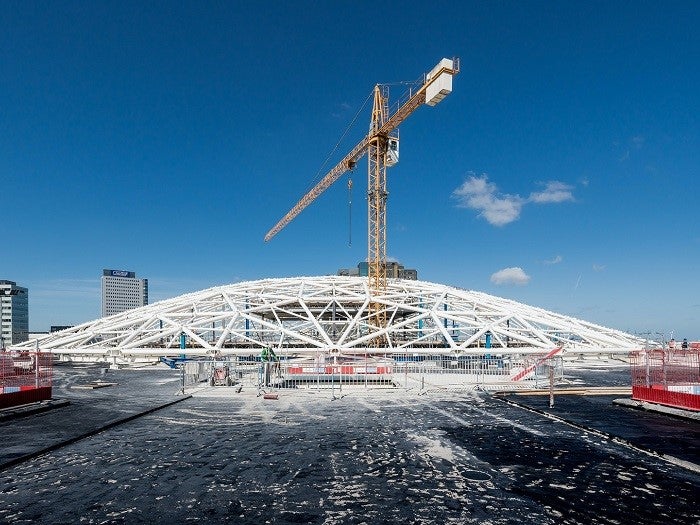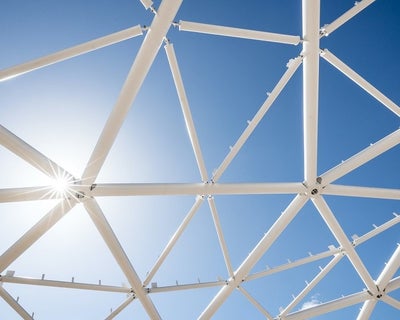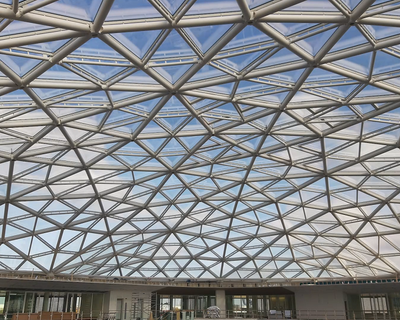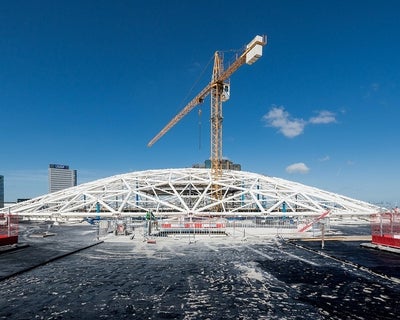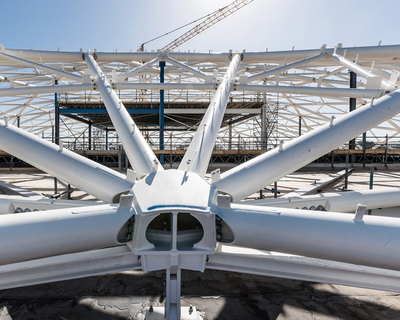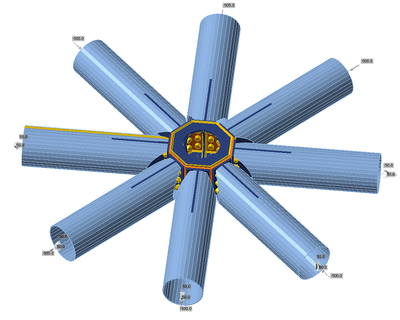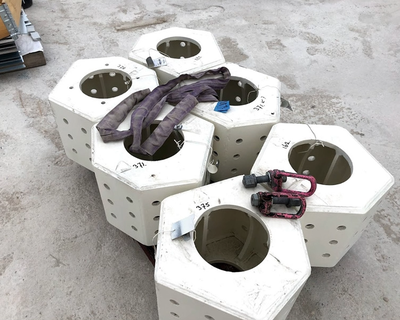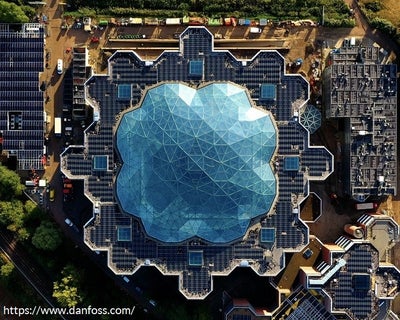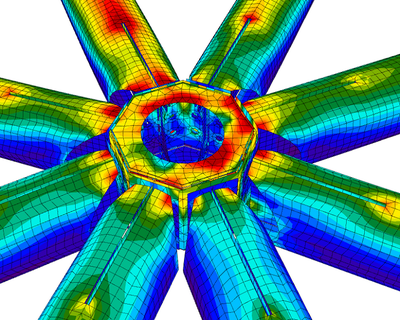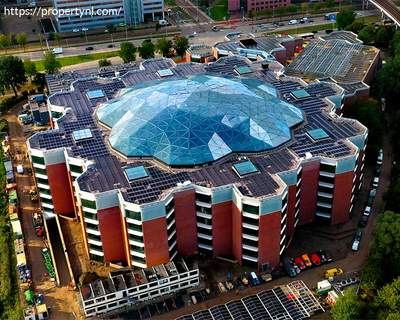EDGE Amsterdam West
About the project
The EDGE redevelopment 60,000 m² project was led by the original architectural firm Architekten Cie, in which the inner garden was covered with a gigantic 4,400 m² domed roof spanning 76 m.
Consulting company G&S Bouw commissioned construction company ASK Romein to supply and assemble the gigantic supporting steel structure for the building’s remarkable glass dome.
The dome, conceived by Architects Cie with SIDstudio, was designed to relate to and reflect the shape of the existing building while also bringing it up to date and making it future-proof.
With a height of 12 meters and spanning a massive 76 m, the dome’s octagonal main structure is composed of circular hollow sections with a diameter of 324 mm and a variable wall thickness that created a grid of triangles (with sides roughly 8.3 m in length). A secondary triangle structure (radians of the first) creates surfaces bridged by glass panels.
A tension ring balances the permanent horizontal forces of the dome and is connected to it at four locations to create a solid second load path.
The engineering, production, and erection of the steel structure of the dome took around one year.
The micro-geometric design of the dome is a nod to the original design by Oyevaar, and the building now boasts an impressive green atrium, open staircases, and bright office floors.
Engineering challenges
ASK Romein faced many challenges in delivering this beautiful and complex design.
One of the biggest was collecting and assimilating large amounts of data sheets (on the beams, nodes, profiles, forces, etc.) to turn it into a structure they would actually be able to build on-site.
Engineers performed a practical analysis of the data and divided the main 3D model into three types of knots (e.g., where six beams or eight beams came together), and calculated roughly 20 different node types per knot with five decisive combinations.
For key segments of the construction, they decided to use a 'washing drum' connection (you can see on the picture below). Here, the node is fixed, and the repeating part and bars are connected via a head plate connection.
Due to the complexity of the design, every situation required the beams to be at slightly different angles, or they had differing profiles, as well as different forces in those profiles.

Netherlands
The differences were processed in the endplates of the tubes. The reason for this two of three is that the tubes can be cut by machine, meaning much tighter tolerances can be achieved and deviations are minimized. The assembly nodes were checked with IDEA StatiCa Connection by importing bar orientations from the drawing model and forces from the filtered tables of the main calculation model in Oasys GSA.
The team decided that for every node, they would model a vector (the average of all beams) that would show the direction the nodes should be in for every position (via arrows pointing toward the center).
The standard principles of the standard nodes were only properly modeled once and could then be copied and applied to many imported situations. In this way, it could be stated with certainty that all normative situations had been calculated and tested.
Another really important thing for the team was to make the structure more predictable by choosing a standard detail that they thought would be strong enough and then running it through IDEA to check that this would be the case in every situation.
Their next big challenge was ensuring the stability of the structure during the build, for which IDEA StatiCa Connection was essential.
Furthermore, in order to build the dome’s steel structure, a self-erecting construction crane was set up in the atrium that protruded through the temporary work platform and roof. Of course, this had to be dissembled before the dome was fully sealed.

Netherlands
Solutions and Results
The EDGE Amsterdam West structure project was completed in Q3 of 2021, just one year after starting.
The previously unused inner garden has now been transformed into the new heart of the building—an inspiring light-flooded atrium that serves as both a functional space suitable for meetings as well as a green urban oasis where workers can connect, relax and re-energize. A great place to experience the atrium and dome is from the large terraces on the first floor, which also serves as meeting spaces.
Eight round shafts were converted into light courts in order to invite even more natural daylight to each of the 6,700 m2 floors, and four imposing staircases replaced the elevator shafts to guide tenants in making healthy choices.
All facades of the building were completely renovated, and the windows were replaced by high bays containing high-quality glass. However, the character of the original building has been preserved thanks to a design that respects the rhythm of the bricks, bay windows, and horizontal aluminum slats.
Built to meet the highest sustainability, technology, and health standards, EDGE Amsterdam West is now a place where history, technology, and modern architecture meet to become a biophilic, sustainable, and inspiring office environment.
About ASK Romein
Founded in 2000, ASK Romein is a construction company group with offices in Belgium and the Netherlands, specializing in Total, Steel, Industrial, Offshore, Bridge, and Turnkey construction.
Through their own technical expertise and investment in complementary construction activities, they design and deliver all types of construction projects to their customers all over the world.
The firm won the category Large Building for this Edge Dome project in the IDEA StatiCa Excellence Awards 2021.


